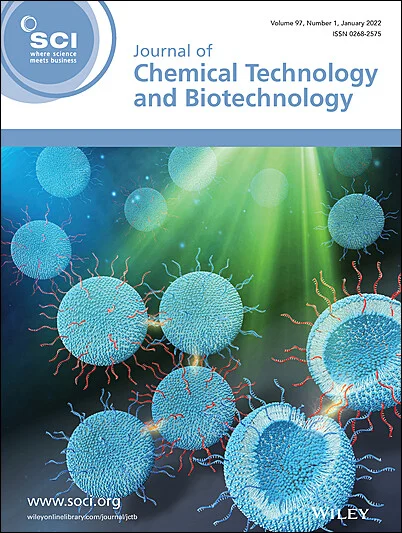Diols production from pyrolysis oil water-soluble fraction
Abstract
BACKGROUND
The production of value-added chemicals from pyrolysis oil or its fractions is of great significance for the valorization of biomass. Diols, including ethylene glycol (EG) and 1,2-propylene glycol (1,2-PG), are important bulk chemicals with widespread industrial applications. Here we investigated the production of diols from pyrolysis oil water-soluble fraction (WS) using a hybrid catalyst (Ni + H2WO4).
RESULTS
Firstly, levoglucosan, glycolaldehyde and acetol, three main components in WS, were respectively selected as the single model compound, and their respective conversions into diols were investigated at different temperatures for different reaction times. The result showed the optimum reaction temperature and time were 180 °C and 2 h respectively, under which a EG yield of 53.8% and 1,2-PG yield of 5.2% were obtained from levoglucosan conversion, a EG yield of 98.6% was obtained from glycolaldehyde conversion, and a 1,2-PG yield of 98.5% was obtained from acetol conversion. The reaction pathway of levoglucosan conversion was analyzed. Secondly, the model mixture of levoglucosan, glycolaldehyde and acetol was used to simulate the real WS, and their conversion was investigated at different ratios of H2WO4 to Ni. The result showed the optimum catalyst composition was 0.15 g H2WO4 and 0.3 g Ni, under which a EG yield of 76.4% and 1,2-PG yield of 38.4% were obtained. Thirdly, the real original WS was converted under the optimum reaction conditions and the result only gave a EG yield of 19.1% and 1,2-PG yield of 25.8% (based on the carbon moles of main substrates), which were much less than the two yields of model mixture. That was related to the presences of other types of chemicals in original WS. After the original WS being adsorbed by activated carbon, the yields of EG and 1,2-PG could be increased to 39.2% and 37.9%, respectively.
CONCLUSION
The presences of certain other types of chemicals (such as acids, furans, phenolics and cyclopentanones) in original WS inhibited the production of diols. The activated carbon adsorption could efficiently remove most of furans, phenolics and cyclopentanones in original WS and increased significantly the diols yields. © 2024 Society of Chemical Industry (SCI).

 求助内容:
求助内容: 应助结果提醒方式:
应助结果提醒方式:


